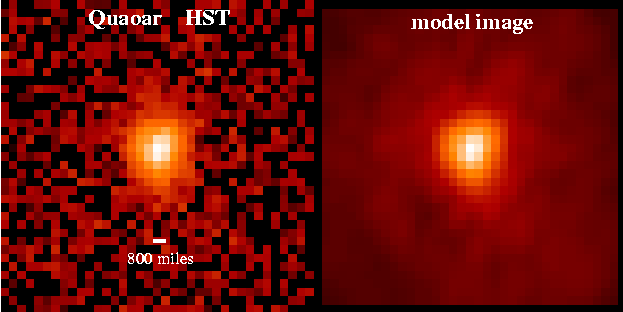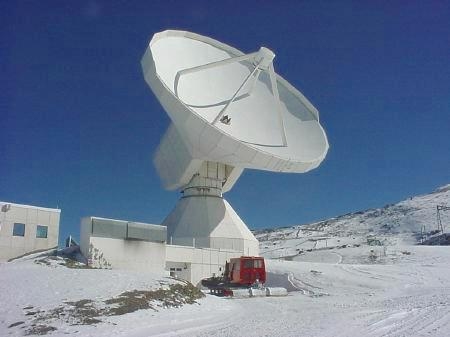
 Copyright © Michael Richmond.
This work is licensed under a Creative Commons License.
Copyright © Michael Richmond.
This work is licensed under a Creative Commons License.
Just a few days ago, a pair of astronomers at Caltech announced their discovery of a very large asteroid in the outer solar system. At the moment, the object's official name is 2002 LM60, but they propose that it be called "Quaoar".
You can find a lot of information on this object at their WWW site for it:
2002 LM60 is pretty big, for an asteroid. It's the second-largest body we've found so far in the solar system beyond Neptune. What's the largest?

Brown and Trujillo have used the Hubble Space Telescope to look at the asteroid, but even HST can't see any detail:

So how do we know the size of this object? The researchers also used the IRAM telescope

to look at 2002 LM60. The IRAM telescope measured its radiation in the far-infrared: the amount of heat emitted by the body. That allows us to find its size, if we follow a few steps:
4
power = (surface area) * sigma * T
2
power = (apparent flux) * 4 * pi * distance
The result is an estimate of the asteroid's size: about 1200 kilometers in diameter, plus or minus a few hundred.
 Copyright © Michael Richmond.
This work is licensed under a Creative Commons License.
Copyright © Michael Richmond.
This work is licensed under a Creative Commons License.